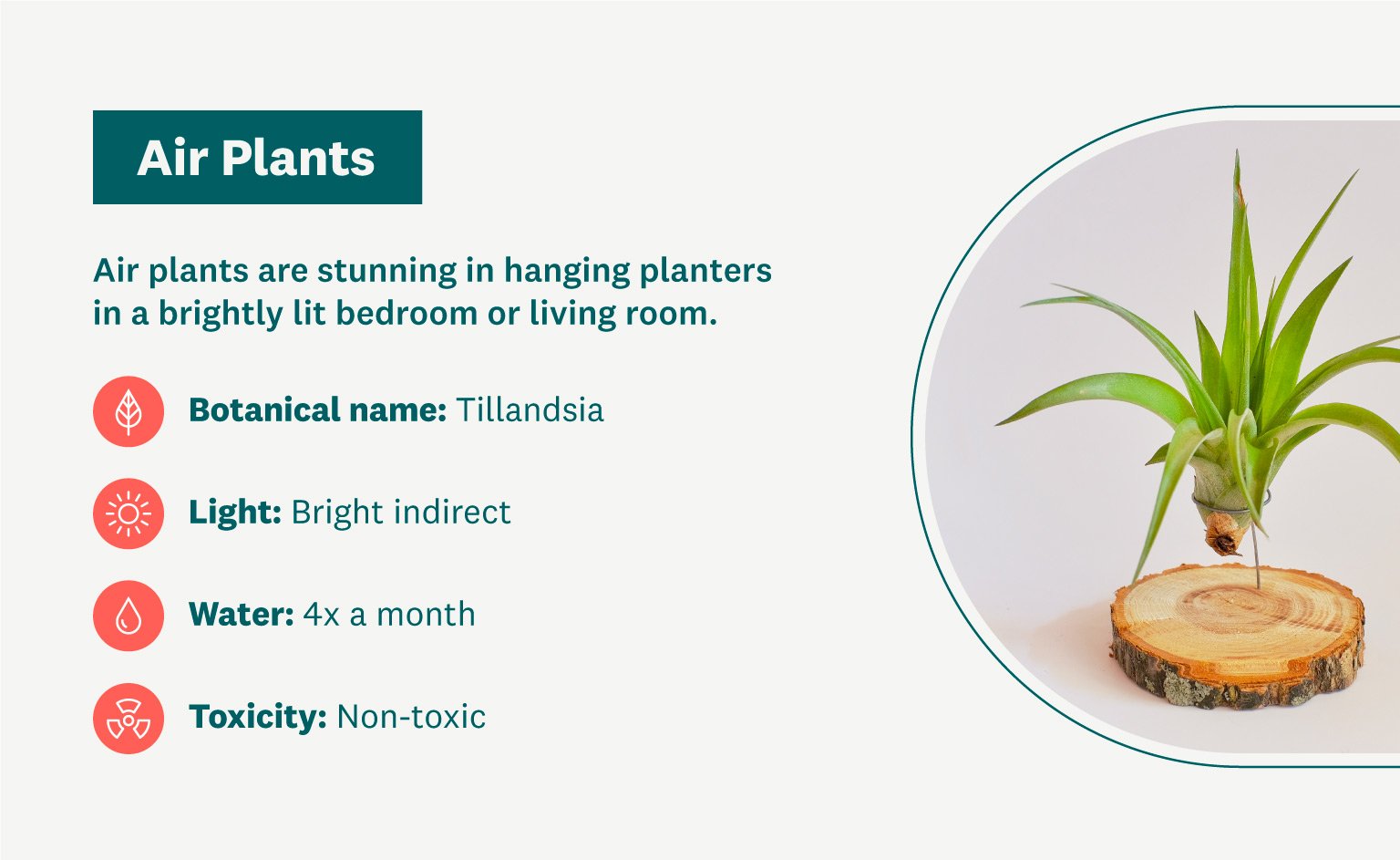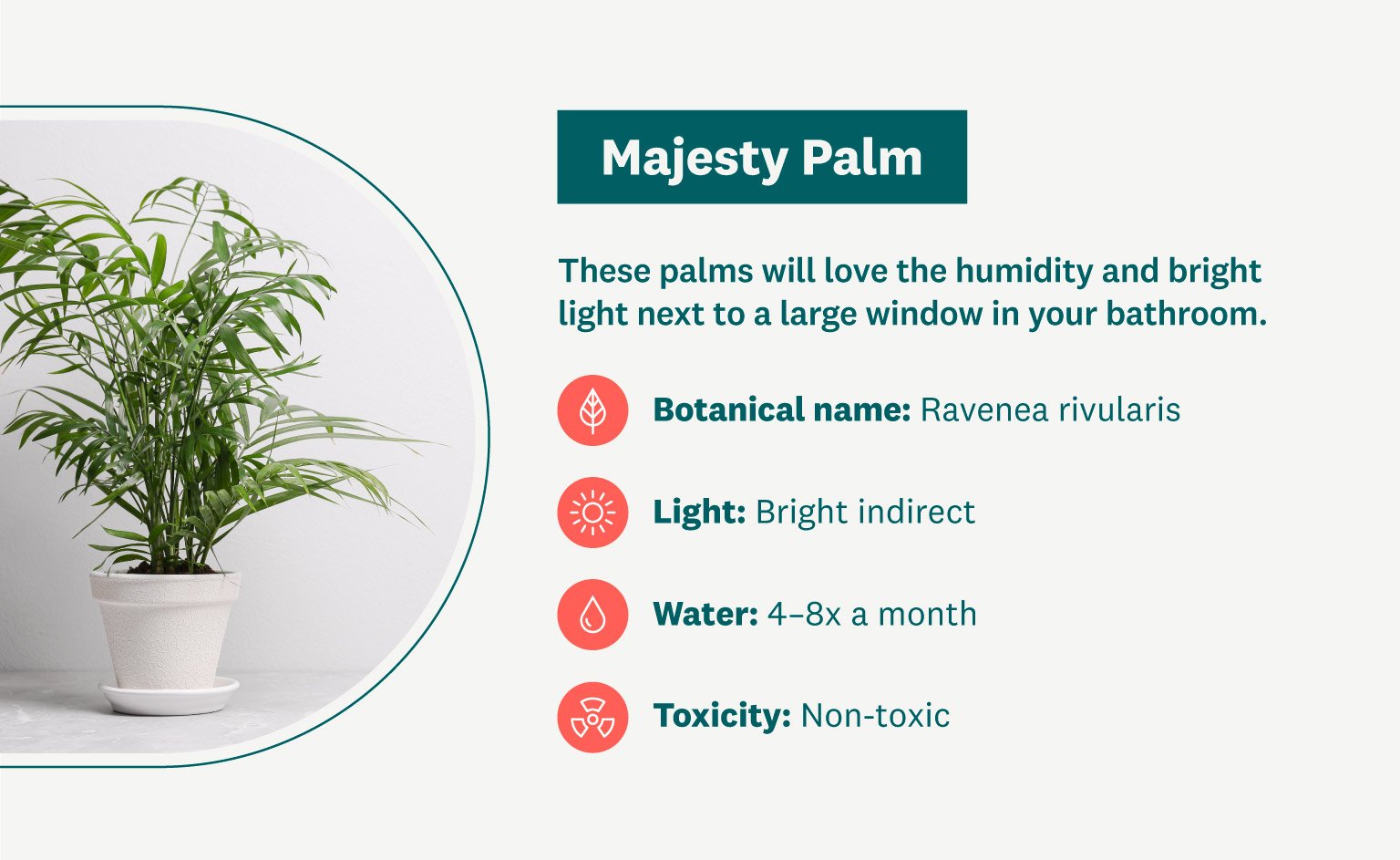The 10 Most Popular Houseplants
These top 10 popular houseplants are must-haves, according to Google search trends


Houseplant ownership is on the rise in the United States, with 66% of consumers owning at least one houseplant. Indoor gardening sales have grown by 20% for some retailers. And a recent OnePoll study revealed that seven out of 10 millennials now consider themselves “plant parents”—people who nurture their plants tenderly as if dealing with something animate.
As the country has persevered through the last two years of the pandemic while staying home, the benefits of having living plants around the house have become more relevant. The OnePoll study also found that 81% of Americans report that their houseplants have actually had a positive effect on their mental and physical health.
To give you a headstart on building your own indoor nature oasis, we examined the most-searched houseplants on Google to identify the ten most popular houseplants for your home’s interior. Each one offers an easy way to add new life and color to a home, and these days it’s an easy process to purchase plants online.
1. Snake Plant

The snake plant (dracaena trifasciata) is the most popular houseplant among current Google searches, with 267,000 searches on average each month. Native to Asia and Africa, this easy-to-care-for plant is identifiable with its evergreen sword-shaped leaves that grow vertically.
They are very durable and capable of tolerating both shade and direct sunlight, underwatering, and dry air. They rarely need repotting and almost never get infested.
A common choice on display in many homes, they are also known to be a good option among plants that help improve air quality by removing toxic air pollutants such as carbon dioxide, formaldehyde, and toluene. This also makes them allergy-friendly.
2. Money Tree

Money trees were popularized in Taiwan in the 1980s and are considered a positive addition to a home’s feng shui. Also known as a Guiana chestnut, they are hardy plants that grow between 6 and 8 feet tall on average indoors.
You may have seen small money trees with braided trunks made up of three, five, or even seven stems, a shape achieved by weaving them together when the plant is young. Perhaps the perception of these plants as lucky helped propel money trees to the second most searched houseplant on Google, averaging 210,000 searches monthly. Working with a feng shui expert near you can help guarantee you place your money tree in the most “valuable” spot in your home.
3. Aloe Vera

Aloe vera is a fast-growing plant that gained favor due to the gel from its leaves that makes for a soothing skin salve. The gel fills the plant's thick, succulent leaves that have jagged edges with flexible spines.
There are over 500 varieties of aloe vera. Some wild species of aloe vera can live for over 100 years. And while aloe vera plants grown outdoors can produce beautiful flowers, it can take years to produce a flower stalk indoors. They thrive when positioned near south- or west-facing windows in the kitchen, where they receive bright indirect sunlight. If you’re not sure which of your home’s windows will work best, consider asking a window specialist in your area.
4. Fiddle-Leaf Fig

Fiddle-leaf figs are trees with large distinctive violin-shaped leaves that are heavily veined and glossy. They also grow outdoors, but most indoor specimens reach around 10 feet tall.
The tree’s large leaves require maintenance to thrive. They often gather dust and mites on their surfaces, and a gentle wipe-down of the leaves one to four times a month helps prevent them from turning yellow or brown.
5. ZZ Plant

Also known as Zanzibar gems, ZZ plants make for a wonderful choice for new plant parents because they are resilient and low maintenance. They tolerate drought and neglect and are able to slowly thrive in low-light conditions.
Their waxy, deep green leaves are wide oval shapes that shoot upward from the plant’s trunk. Also known for their shine, they often appear artificial. ZZ plants take time to grow and reach a height of only 2 to 3 feet.
6. Christmas Cactus

Popular during the holidays and throughout the year, Christmas cacti provide a bounty of blooming bold flowers. Google search results show that 110,000 people are looking for information about this unique plant every month.
The plant usually blooms in winter but can be planted any time of year. It grows fast in comparison to many other plants on our list, able to reach 2 feet tall in two years. A native of Brazilian rainforests, the Christmas cactus requires consistent watering to thrive—a sharp contrast to the drought-resistant desert cacti.
7. Air Plants

Air plants are quirky low-maintenance plants that do not need soil to grow. Instead, they are able to grow on top of other plants and obtain their nutrients from the air, water, and debris around them.
There are hundreds of different types of air plants spanning a wide variety of plant families, including some of the plants on this list. Both Christmas cacti and bird’s nest ferns qualify as air plants.
8. Majesty Palm

The majesty palm is an indoor tree with lengthy green fronds jutting from multiple stems. Outdoors it can climb to 90 feet tall, but indoors it typically reaches only about 10 feet in height due to its slow-growing nature.
It is considered a somewhat temperamental plant, with a love for high humidity and frequent watering. It has also been identified as endangered due to the continued decrease of naturally growing majesty palms in their native Madagascar.
9. Bird’s Nest Fern

The bird’s nest fern is a type of air plant typically found high in the trees of its native rainforest. The plant has naturally glossy leaves arranged in a circular pattern that resembles a bird's nest, hence its name. The large, bright green fronds can grow to 5 feet long outdoors but typically only reach about 2 feet long indoors.
Due to their rainforest roots (no pun intended), these ferns are happy with humidity and make a great addition to bathrooms and kitchens where they can soak up the moisture in the air.
10. Bird of Paradise

One of the most recognizable tropical flowers, the bird of paradise features bright orange and purple flowers. Named for its resemblance to the tropical bird with the same name, it is easier to manage than most tropical plants.
This fast-growing plant can grow 5 to 6 feet tall with oversized leaves that can measure from 12 to 18 inches long. It adapts well to being indoors or outdoors in warm summer months and sprouts upright leaves that emerge directly from the soil with no trunk.
Plants have been proven to improve people’s health and well-being, so you’ll be able to enjoy the benefits no matter what houseplants you keep in your home. This list will hopefully inspire you, perhaps with unique plant-based decor ideas for your reading nook or ways to make your bathroom relaxing with the perfect plant.






- Landscapers
- Tree Surgeons
- Gardening Services
- Landscape Architects
- Sod Installation
- Tennis Court Contractors
- Landscape Design
- Retaining Wall Companies
- Grading Companies
- Landscape Rock & Sand Delivery
- Mulch Delivery Services
- Pond Companies
- Artificial Grass Companies
- Shrub Removal & Trimming
- Backyard Design Companies
- Commercial Landscaping
- Koi Pond Services
- Backyard Landscapers
- Trampoline Assembly
- Hedge Trimming
- Pond Services
- Garden Design
- Outdoor Plant Watering
- Putting Greens
- French Drains
- Turf Installation
- Sod Removal Services
- Lawn Repair Services
- Brush Chipping Services
- Hardscape Contractor
- Landscape Rock Removal
- Go Green: The Best Plants for Every Room in Your Home
- The 10 Best Bedroom Plants for Better Sleep and Cleaner Air
- 12 Easy Houseplants You Can Get On a Budget
- Bring Back Your Dying (or Dead) Plant With These 8 Tricks
- How to Care for a Money Tree, a Low-Maintenance Houseplant You’ll Love
- How to Spruce Up Your Existing Garden by Adding New Plants
- Need New Plants? 8 Tips for Ordering Healthy Plants Online
- Need a Vacation? How to Keep Your Plants Alive When You’re Out of Town
- How to Arrange Houseplants With Your Home's Natural Light
- 14 Unique Plants to Make Your Garden the Talk of the Town









